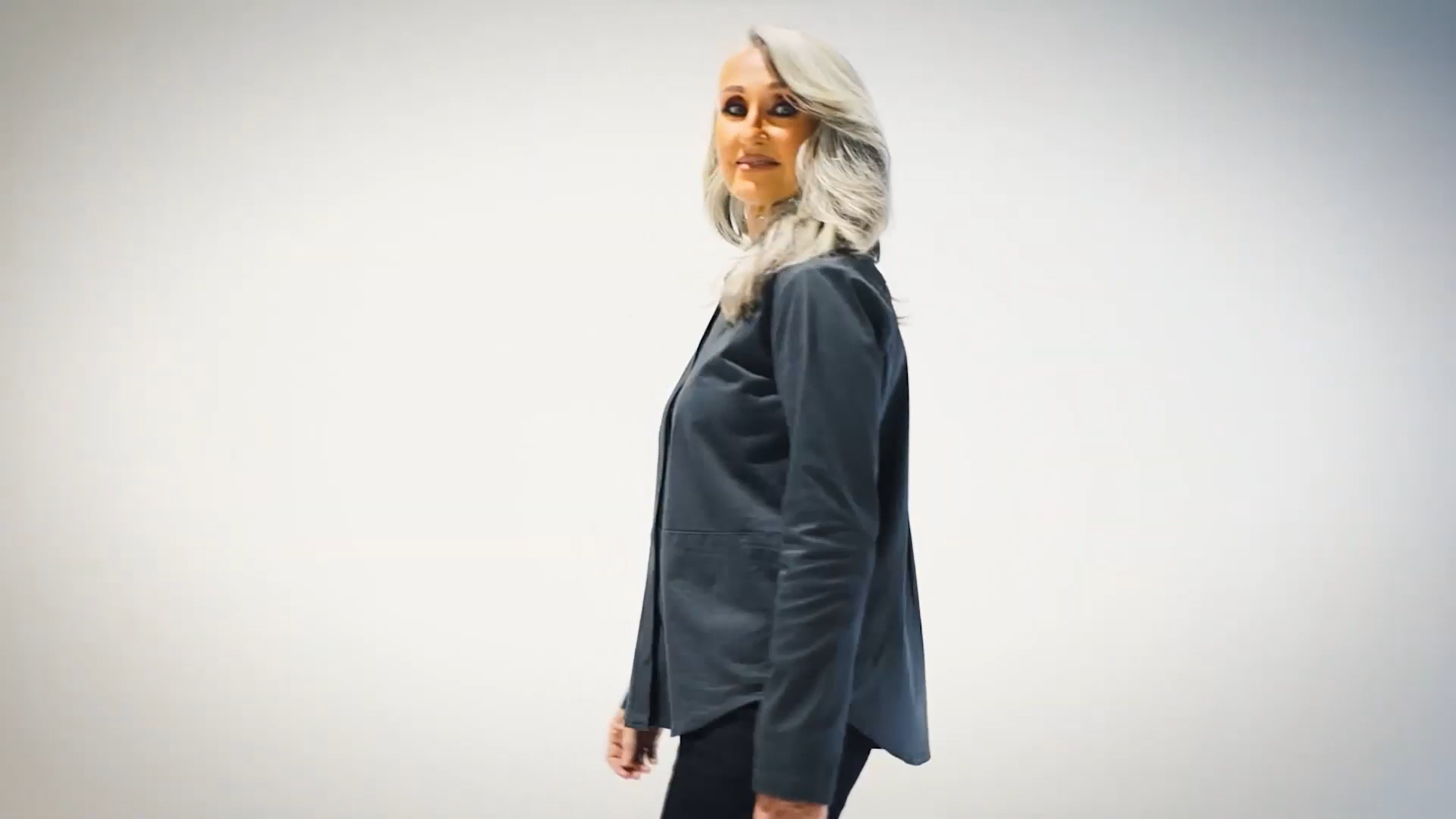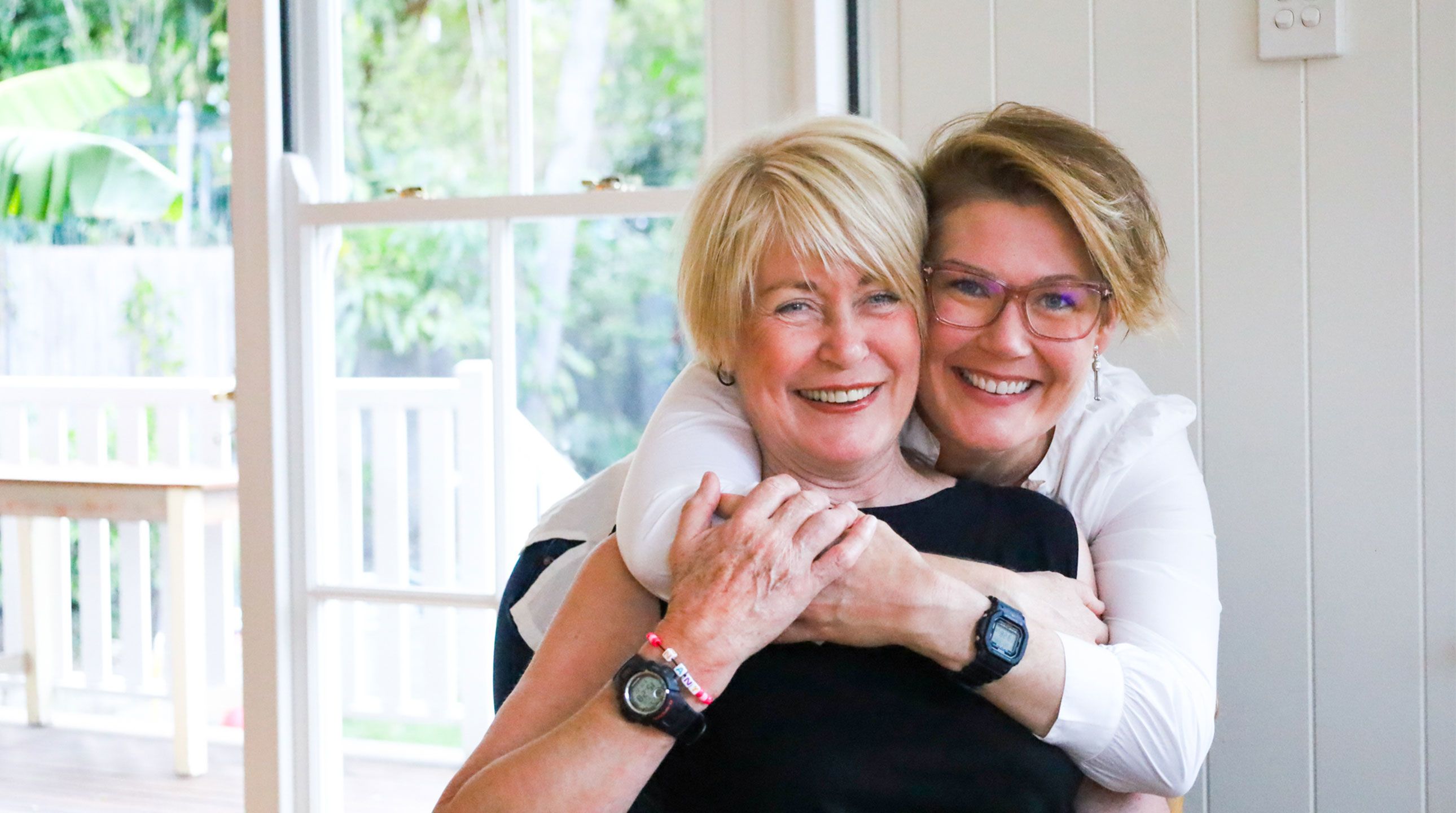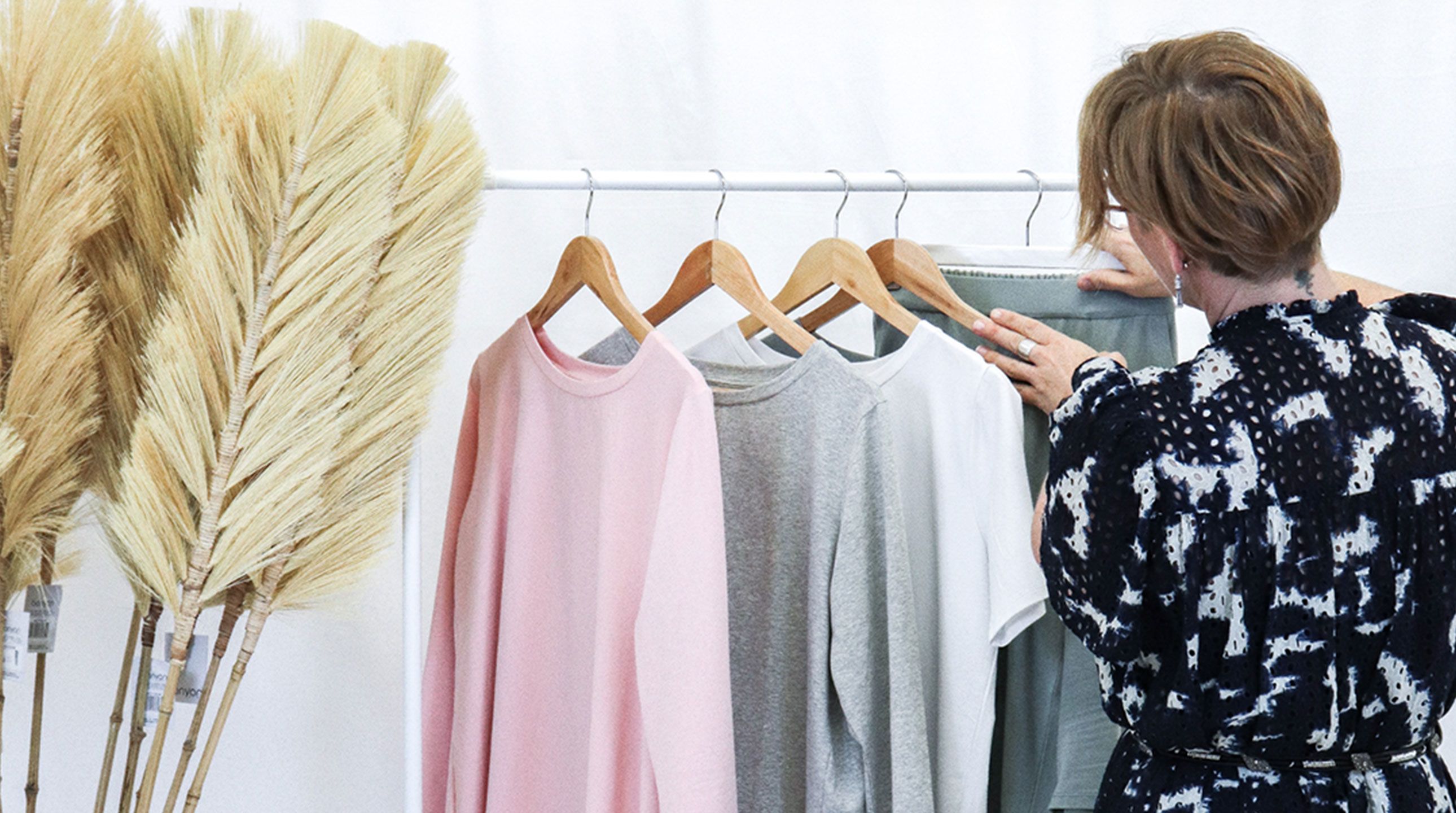Making adaptive fashion mainstream
Q&A with UQ graduate Jessie Sadler,
founder and designer at Christina Stephens

In celebration of 2022 International Women’s Day, Contact sat down with Jessie Sadler, a fashion innovator on a mission to make clothing more inclusive.
Every startup has a story, and for Sadler (MBA ’16), her label Christina Stephens was built upon a deeply personal drive to make apparel more inclusive, adaptive and comfortable for people with disabilities and changing bodies.
She sat down with Contact to reflect on her time at UQ, her journey from oil and gas to entrepreneurship, and how she’s breaking biases in business and fashion.
What inspired the concept behind your clothing label Christina Stephens?
Six years ago, my mother and I were shopping on James Street in Fortitude Valley and she tripped and she smashed both of her elbows. As you can imagine, that rendered her immobile. It was very painful and difficult for her to lift her arms to get dressed. When we searched online for clothing for people with temporary disabilities, there wasn't a lot that got our attention and in fact, we were quite underwhelmed.

Jessie Sadler with her mother Christine.
Jessie Sadler with her mother Christine.
The first phase of my concept development was post-surgical or recovery garments. But as I spoke to more and more people in the industry and also people with long-term disabilities, there was a clear and glaring need for clothing made for people with long-term disabilities, that have upper-body mobility challenges, dexterity issues, and for quadriplegics who cannot move in their chair to get dressed or need to be dressed on a bed.
How did your earlier studies and career path shape your journey towards launching your own brand?
When I did my MBA with UQ, I was working in the oil and gas sector in the commercial and product development space. My intention or vision of doing the MBA was to climb the corporate ladder where I was.
But the opportunities, content and people that you're exposed to throughout the MBA shifted my way of thinking. I decided I really wanted to work for myself.
“I built a lot of confidence during the MBA. I was confronted with new ideas and opportunities to do research projects abroad.”
The high calibre of students in that cohort is a large part of the education, and bouncing ideas off each other was a great opportunity.
It gave me the confidence, a toolkit and contacts that enabled me to feel confident and have a clear pathway to launch the brand.

Can you tell us about the research and development process you undertook for the brand?
One of the best things I did during my MBA at UQ was the lean startup challenge. I did a pathetic project. I was so pushed for time and had a new baby and had coursework on top. It was an appalling project that I delivered, but I learned so much along the way. It was really about pivoting.
I know it's an overused word now, but it involved developing a concept, testing, coming back, pivoting, developing the concept further, going out and retesting, coming back, and pivoting until you start getting that concept right.
I followed that methodology very closely when testing designs, and also listened to customer feedback for our first collection.
The research process was a lot of talking to people. I hadn't worked in the fashion sector before, and I was not familiar with the disability community or the disability sector. Getting out and developing networks and talking to as many people as possible was a must for me in developing the brand.

Diverse women involved in the Christina Stephens 'Unique Women, Unique Stories' group, which helps inform the designs in each collection. Image provided.
Diverse women involved in the Christina Stephens 'Unique Women, Unique Stories' group, which helps inform the designs in each collection. Image provided.
When did you first launch and how has your line been received since?
We launched right on COVID-19 lockdown in March 2020. And then everything came to a grinding halt. The first few months were really tough. It was hard to cut through the media, noise and fear around the coronavirus.
Our customer base in the disability sector are considered high-risk people during the pandemic, so getting a new product in front of that customer base was particularly hard.
We have launched two collections so far and extensions in sizes and colour range within those collections, and the feedback gets better and better.
We learn a lot more by reaching out to our customers after they've bought something and having a telephone call with them to understand what works, what doesn’t and what they want to see.
The theme of International Women's Day 2022 is 'Break the bias'. What biases have you overcome in your career? And what biases does your line Christina Stephens aim to break?
I struggled with bias in my previous career in the oil and gas sector, as I imagine a lot of females and minority groups do.
Rather than breaking the bias within the corporation, I broke it by leaving and starting a business that I was very passionate about, that I was in control of, that I had the vision for, and that I controlled.
I'm very proud of doing that because that has made my career and personal life a lot more enjoyable. I feel that I am able to give opportunities to others that also are setting out to break biases.
The biases that our line Christina Stephens aims to break is that people living with long and short term disabilities love fashion, just like people without disabilities.
“There are assumptions that people with disabilities don't care what they wear, that they don't care what they look like or how they present to the world. These are very unfortunate and very incorrect.”
Fashion has a big impact on anyone in terms of the way they express themselves to the world. It’s another tool that someone living with a disability can use to express themselves to other people. Comfort is a big factor and ease of wearing clothing is a big factor.
Bringing adaptive fashion to the mainstream and breaking that bias is our number one mission at the moment.



